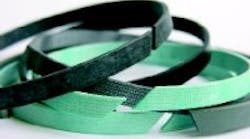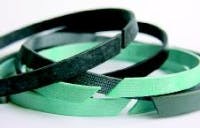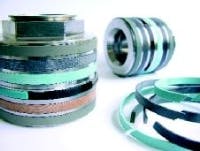Major advantages can be had by designing seal grooves and housings to international standards. By adhering to standards, manufacturers of hydraulic systems can specify standard seals, thereby avoiding the cost of special tooling and allowing customers easy access to standard spare parts. Seals can also be readily upgraded if operating conditions of a machine change.
Two of these international standards are
- DIN / ISO 7425-1, which regulates the housings for elastomer-energized plastic seals on hydraulic pistons, and
- DIN / ISO 10766, which applies to housings for rectangular-section, cut bearing piston rings, and rod seals.
Engineers may view having to design seals to these standards as restrictive. However, Rolf Poethig, technical director at Busak+Shamban, Stuttgart, Germany, counters that offering a range of products that meets dimensional requirements and provides sealing properties to match a variety of application parameters helps overcome restrictions of standards.
Seven different piston seals can be selected from the Busak+Shamban modular DIN ISO system. Designed for use in housings complying with DIN ISO 7425-1, they satisfy virtually all mobile and stationary hydraulic system demands. Being suitable for light, average, or heavy-duty use, they can suit almost any type of fluid, pressure, temperature, and speed.
In circumstances where sudden starting motion can be a problem, Poethig says virtually stick-slip free operation can be achieved with Turcon, a proprietary PTFE material, or Zurcon polyurethane and thermoplastic materials. Users can also choose between single-and double-acting seals and seals for sealing gases, such as fitted in piston accumulators.
The Busak+Shamban range of ISO 10766 compliant wear rings provides similar freedom. Engineers can choose from a variety of materials for the best combination of performance and cost for an application. Poethig cites the following examples:
- Turcite Slydrings® made of PTFE-material filled with bronze, exhibit low friction, so they resist stickslip operation.
- Zurcon® Z80, an ultra-high molecular weight polyethylene material made without fillers, is best suited for hydraulic systems using high-water-based fluids.
- HiMod material maintains high strength even at temperatures to 130° C.
- Fiber-reinforced LUYTEX Slydrings are suitable for applications exhibiting high radial stress.
Another advantage of designing to these standards is that seals and slideways can be combined in different configurations to suit specific operating conditions within the same piston structure. This enables piston manufacturers to produce larger batch sizes, thus lowering overall manufacturing costs.
This article is excerpted from the October 2006 issue of ÷hydraulik und Pneumatik magazine, Mainz, Germany. Busak & Shamban brand products are available in the U.S. from Trelleborg Sealing Solutions, Ft. Wayne, Ind. For more information, visit www.busakshamban.us.



